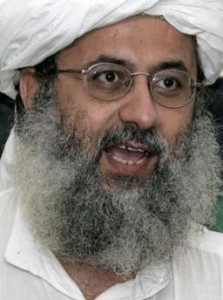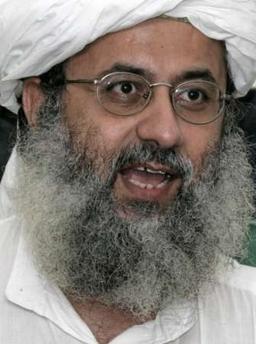 “Pakistani authorities now believe a dangerous new militant group [the Ghazi Force], out to avenge a deadly army assault on a mosque in Islamabad three years ago, has carried out several major bombings in the capital previously blamed on the Taliban,” reports Kathy Gannon for the Associated Press.
“Pakistani authorities now believe a dangerous new militant group [the Ghazi Force], out to avenge a deadly army assault on a mosque in Islamabad three years ago, has carried out several major bombings in the capital previously blamed on the Taliban,” reports Kathy Gannon for the Associated Press.
“The emergence of the Ghazi Force was part of the outrage among many deeply religious Pakistani Muslims over the July 2007 attack by security forces against the Lal Masjid, or Red Mosque, a stronghold of Islamic militants. … The new group is made up of relatives of students who died in the Red Mosque assault. It is named after the students’ leader, Maulana Abdul Rashid Ghazi, who was also killed.”
Last June I hosted a FireDogLake book salon for Nicholas Schmidle, the author of To Live or to Perish Forever: Two Tumultuous Years in Pakistan. Before the attack, he visited Lal Masjid and interviewed Ghazi, who, along with his brother, inherited its leadership from his father, who was assassinated there. Of the three only Ghazi’s brother, who, you may recall, escaped dressed as a woman in a burqua, was spared that fate. (Later caught, he was recently released from prison. Guess Pakistan’s prison system is still a swinging door for jihadis.) The first mosque built in Islamabad, Lal Masjid once served an exclusive neighborhood of Islamabad.
Ghazi impressed Schmidle with his genial nature — in appearance, he reminded the author of Jerry Garcia! Gannon again:
A former senior official [said] that the police wanted to storm the mosque and end the siege at its outset [and] send the students home . . . until tempers cooled. President Gen. Pervez Musharraf refused, the official said, even though police knew that members of [an al-Qaida] affiliate organization . . . were bringing in weapons for the students. Musharraf relented and ordered the assault after militants kidnapped several Chinese nationals running a massage parlor in Islamabad, accusing them of prostitution.
Since the Chinese had invested hundreds of millions in buiding up the port in Gwadar (on the Arabian Sea), they pressured Musharraf to protect their people in Pakistan. Despite a government clean-up after the attack faster than Ground Zero after 9/11, Schmidle estimates that as many as 1,000 of those inside the Red Mosque were killed.
Meanwhile, news that it wasn’t the Taliban that had committed the string of Islamabad attacks caught many by surprise. In retrospect, though, it was no more surprising than when David Koresh and his Branch Davidians were slaughtered at Waco, Texas in 1993 and, along with Ruby Ridge, became a rallying point of the American militia movement.
Me to Nicholas Schmidle: How is it that the genial, level-headed Ghazi, as you wrote, “morphed from an outspoken extremist with a perma-smirk into a bona fide terrorist”? In other words, how did he wind up becoming Pakistan’s version of David Koresh and backing himself and his followers into an apocalyptic corner?
Schmidle: Ghazi was not a suicidal dude, or at least I didn’t think so. If anyone reads my account of him, you’ll see that he was critical in me getting access to jihadis that would have otherwise been unthinkable. … I felt remarkably safe in his presence.
But I believe that he was a victim of his own personality cult. … He had built up the jihad and built up himself to such a degree, and surrounded himself with some bad-ass fighters from Pakistan’s most elite jihadi organizations, that when it came down to the final showdown, he left no room for himself to back down.
Likewise, apparently, those carrying on his legacy leave no room for themselves to back down — or give no quarter.

